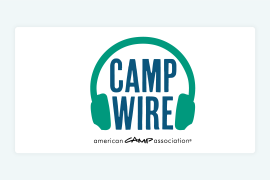When families are looking to book summer camp for their children, they do the research. Summer camp is expensive and parents want to know that they are sending their child to the best possible camp for them.
That’s where your camp listing comes in. Before talking to you and your team, families look at how you are describing your camp, the photos you include, reviews, and so much more. You need to take the time and care to write a strong camp listing that shows, rather than tells, families everything they need to know.
To help you make sure you don’t miss anything, we’ve outlined everything you need to build the strongest possible summer camp listing and encourage families to choose your camp for their children. If you are looking for even more guidance, we created an interactive camp marketing guide that you can use.
What Makes a Strong Camp Listing?
A strong camp listing is one that tells the story of your camp and convinces families to sign their child up! Include as much information as possible, high-quality photos, and parent reviews to help customers make that big purchasing decision.
Camp Listing Checklist
When we say, “as much information as possible,” what do we mean? We mean you need to give parents insight into what a typical day will look like at your camp as well as a good understanding of how their child will benefit from attending your camp.
Use this checklist to build the strongest camp listing and make sure you are showcasing your camp to parents.
- Start with a short, insightful 1–2 sentence overview, highlighting your camp’s offerings, themes, and focus.
- Then, 1–5 paragraphs describing your camp, what campers will do, what parents can expect their children will learn, and any other important information that shows the value of your camp.
- After, include a sample schedule so parents can see the types of activities their children will do, if there is nap/rest time, when they eat lunch and snacks, and more. Try to anticipate parents’ questions and answer them before they ask.
- Add 3–10 high quality photos of campers having fun, the types of activities you run, your space, your staff, and anything else that will help parents see the benefits of your camp.
- Include a sample list of supplies campers might need to bring (ex: hat, sunscreen, bathing suit, change of clothes, smock, etc.).
- Don’t forget to offer available add-ons such as extended day, drop-off and pickup, T-shirts, and more.
- Let parents know how they’ll receive information from you. For example, “You will be sent a detailed email the week before camp begins with drop-off and pickup instructions, a packing list, and more. Please be sure to check the email address you used for registration.”
- Finally, you need to have reviews from parents and campers showcased in your listing. Reviews are incredibly important! In fact, Power Reviews found that over 99.9 percent of consumers read reviews, at least sometimes, when shopping online. Likewise, 98 percent of consumers feel that reviews are an essential resource when deciding what to purchase.
How to Write About Your Camp
When you write about your camp in your listing, it’s best to focus on values-based messaging. This communication strategy highlights the value your program provides and how it aligns with your customers’ needs and wants. Parents want to know why they should choose to send their child to your camp and not one of your competitors. Use our outline below to get started!
Camp Listing Description Outline
Get ready for a fun-filled [general description of the camp. Ex: educational and exciting STEM camp / outdoor soccer camp / drama-free theater camp / exploratory, hands-on art camp]. Our schedule will be filled with [description of what campers will do at your camp. Ex: hands-on experiments and activities / soccer drills, games, and fun / imaginative games and songs / messy, mixed media art projects].
Throughout the camp, campers will learn [description of what campers will learn while at your camp. Ex: the scientific method and the joy of experimentation / proper soccer skills and the love of the game / theatre skills, confidence, and the fun of performing / how to trust their art instincts and the benefits of different art media].
At [your camp name], we believe [general description of your organization’s values and goals. Ex: in the power of STEM education for children / that when children play on a team, they learn important life skills and grow into better individuals / that theater can help children gain confidence and expand their imaginations / in the joy of messy, rule-free art for children (and adults!)].
Our goal for this camp is to help your child [general description of what campers should learn or be able to do by the end of the camp. Ex: think more scientifically about the world around them and feel comfortable planning and running experiments / feel more confident on and off the field / increase their self-esteem and feel more comfortable performing / expand their art skills and grow as artists].
Building a strong summer camp listing is the best way to encourage parents to sign their children up. We hope these tips help you as you prepare for the big booking season to come. We have even more information and an interactive fill-in-the-blank camp description that you can use in our camp marketing guide. Ready to make summer 2026 the best one yet? You got this!
This article was sponsored by Sawyer. Sawyer is an all-in-one camp registration and management software that helps camp owners and children’s activity providers efficiently run their businesses so they can spend more time doing what they love. Looking for ways to supercharge your camp? Speak with one of our camp experts.
Lizzie is the content marketing manager for Sawyer. She helps connect camp owners and educators with the resources they need so they can spend less time on administrative tasks and more time working with children. A lifelong lover of camp as both a camper and counselor, Lizzie is thrilled that she gets to spend her days helping providers discover and use Sawyer to make camp more accessible.
Periodically, the American Camp Association (ACA) makes timely and relevant information about products and services available to its members so they can make informed decisions for their camps. However, the ACA does not endorse products, services, or companies.
The views and opinions expressed by contributors are their own and do not necessarily reflect the views of the American Camp Association or ACA employees.




